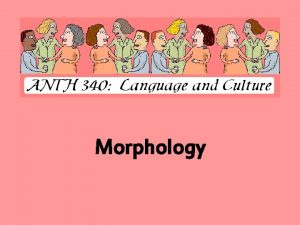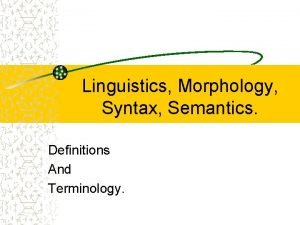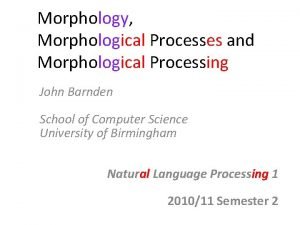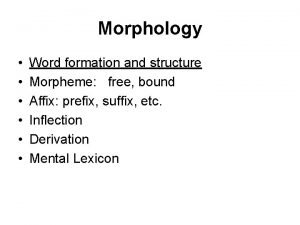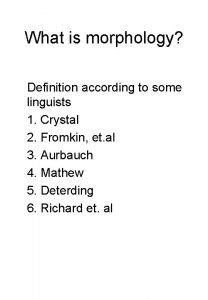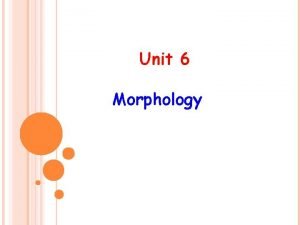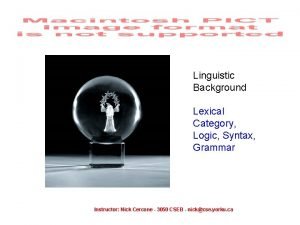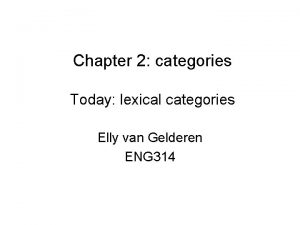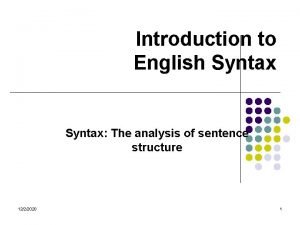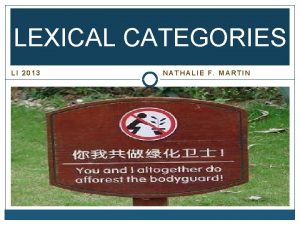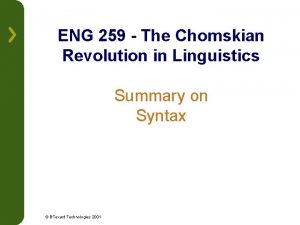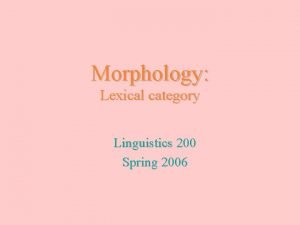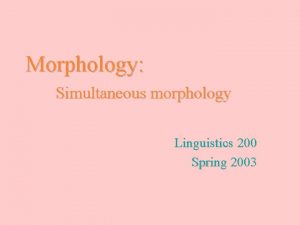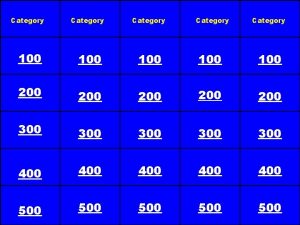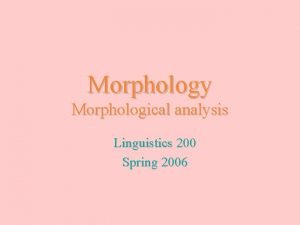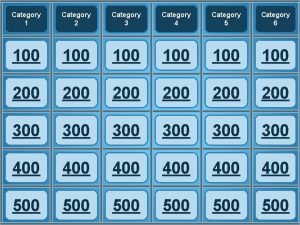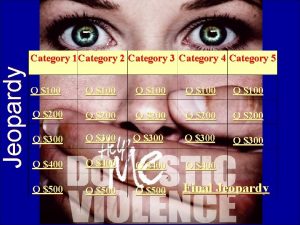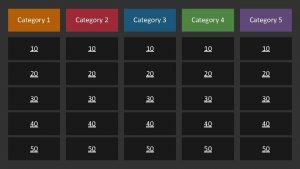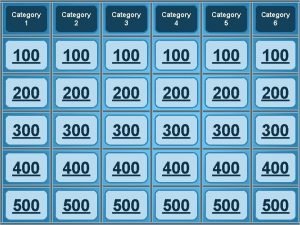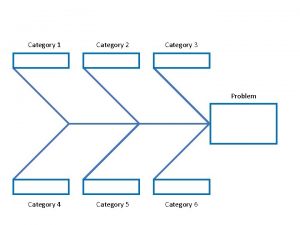Morphology Lexical category Linguistics 200 Spring 2006 Lexical








![A verb forming affix • -i ‘do with N’: ]N ___ ]V • t. A verb forming affix • -i ‘do with N’: ]N ___ ]V • t.](https://slidetodoc.com/presentation_image_h2/15b463016dfe15db14e78cd897d2b7d3/image-9.jpg)










- Slides: 19

Morphology: Lexical category Linguistics 200 Spring 2006

Lexical category n n = ‘part of speech’, ‘grammatical category’ What are the lexical categories? n n n of a given language? across languages? Why this is important in linguistics n Words of different lexical categories have different properties n n n Can combine with certain affixes (e. g. ) to form words Can combine with certain words (e. g. ) to form sentences (Imagine a dictionary which didn’t include lexical category)

Determining lexical category Morphological tests: what kinds of bound morphemes can be added to morphemes in category X? n Syntactic tests: what kinds of words can words in category X combine with? n Typical description of lexical categories n nouns: X, Y, Z characteristics (in lg. P) n verbs: A, B, C characteristics (in lg. Q) n adjectives: … n

Verbs n Meanings: typically denote actions, events, states n But meaning is not always a reliable guide ‘hungry’ is an adjective in English n ? An. A wi wi ‘be hungry’ is a verb in Sahaptin n n Some Sahaptin verbs s nwi ‘talk’ n p. Ajúwi ‘be sick, hurt’ n k. A Am ‘miss’ n pnú ‘sleep’ n

Characteristics of Sahaptin verbs n Can be affixed with tense/aspect suffixes –šA imperfective (unless irregular) n -(n)XA habitual n -t. A future n n Can be affixed with person/number affixes ? i- 3 sg n p. A- 3 pl n -k 2 sg imperative, etc. n

Question (part 1) n Think of a language (other than English) that you know or have studied. List one verb and explain why you think it is a verb.

Nouns n n Typically refer to objects, classes of objects, concepts Some Sahaptin nouns n n n Morphological test n n ? A ? A ‘crow’ ? w nš nš ‘man’ tiin. A wit ‘culture, tradition’ hulí ‘wind’ (also a verb, ‘be windy’) cannot be affixed with tense/aspect suffixes Syntactic test (‘frame’) for nouns n ___ verb or verb ___ n n ? ipnúšA ‘he’s sleeping’ ? ipnúšA ? w nš nš or ? w nš nš ? ipnúšA ‘the man is sleeping’

A noun-forming affix n Some affixes change lexical category (‘category-changing’) n E. g. –/t’A w. AAs/ instrument: ]V __ ]N (“attaches to verbs, forms nouns”) [[ q’íwi]V t’A w. AAs]N N(oun) V(erb) | q’íwi ‘play’ t’A w. AAs Phonology applies to word after morphemes joined together: [ q’iwit’A w. AAs] ‘toy’ n Properly speaking, –/t’A w. AAs/ does not cause / q’íwi/ to change category from verb to noun. Rather, –/t’A w. AAs/ specifies that the word containing the morpheme / q’íwi/V is a noun.
![A verb forming affix i do with N N V t A verb forming affix • -i ‘do with N’: ]N ___ ]V • t.](https://slidetodoc.com/presentation_image_h2/15b463016dfe15db14e78cd897d2b7d3/image-9.jpg)
A verb forming affix • -i ‘do with N’: ]N ___ ]V • t. A Atp. As ‘shirt, dress’ (noun) • t. A Atp. Asi ‘wear, put on shirt, dress’ (verb) • • t. A Atp. Asik ‘put on your shirt’ (-k 2 sg imperative) ? Ajn ‘iron’ (noun) • ? A jni ‘iron, press’ (verb) • ? A jnik ‘iron it’

In unloosen, 1. 2. 3. The prefix un- is a category changing prefix. The prefix un- is not a category changing prefix. None of the above.

More morphological properties of Sahaptin nouns Cannot occur with verb affixes n Can occur with case suffixes (next week) n Nouns have dual and plural forms, but 2 types of nouns n n Animate, independently mobile n n -in dual, -ma plural Inanimate or immobile n dual/plural formed via reduplication

Animate nouns Animate and independently mobile nouns n Form plurals with -m. A n ? A ? A ‘crow, ? A ? Am. A ‘crows’ n ? Ap’úus ‘cat’, ? Ap’úusm. A ‘cats’ n ? A j. At ‘woman’, ? A j. Atm. A ‘women’ n č’A ‘ghost’, č’Am. A ‘ghosts’ n

Inanimate nouns Actually, inanimate or not independently mobile n Form plural via reduplication (a way of classifying morphemes by form) n a reduplicative morpheme copies the phonological segments of the root attached to n partial reduplication (affixational) vs. total reduplication (compounding) n

Reduplication in English A type of compounding n ‘real, true’ n red (vs. blue red) n home n tea n

Plurals n Inanimate nouns pšw. A ‘rock’, pšw. A ‘rocks’ n ? t t ‘tooth’, ? t t ‘teeth’ n w. A l. A ‘creek’, w. Al. Aw. A l. A ‘creeks’ (Walla) n n Immobile animate nouns (e. g. plants) n l. Atít ‘flower’, l. Atítl. Atit ‘flowers’

Adjectives Have dual and plural forms, like nouns n Morphological test n n ___-t. XAw ‘more/most’ t mn. A ‘heart’ (noun); *t mn. A t. XAw n t mn. A ji ji ‘nice’ (‘heart’-adj) (adj); t mn. A jit. XAw ‘nicer, nicest’ n n Syntactic test n p. A ju ju ‘very’ ___ p. A ju ju t mn. A ji ji ‘very nice’ n *p. A ju ju t mn. A (‘very heart’) n

Verbs vs. adjectives n ? A t. Aw ‘valuable, important’ (adjective) n ? A t. Aw iw. A ‘it’s valuable’ n n (? A t. Awi ‘love, like, value’ (verb) n n *? i? A t. AwšA ? i? A t. Awiša ‘he likes…’) ? An. A wi wi ‘be hungry’ (verb) ? i? An. A wi wišA ‘he’s hungry’ n *? An. A wi wi iw. A n

Summary Sahaptin lexical categories include noun, verb, adjective n Used in different syntactic and morphological contexts n Subcategories of lexical categories may also need to be distinguished; may have different morphological or syntactic characteristics n Change in lexical category can be accomplished with the addition of certain affixes n

Question (part 2) n In the language (other than English) that you know or have studied, list one noun and explain why you think it is a noun and not a verb.
 300+200+200+200
300+200+200+200 E-rate category 1 vs category 2
E-rate category 1 vs category 2 Difference between linguistics and applied linguistics
Difference between linguistics and applied linguistics Traditional linguistics and modern linguistics
Traditional linguistics and modern linguistics Word structure definition
Word structure definition Morphology vs syntax
Morphology vs syntax 10 types of morphological processes
10 types of morphological processes Examples of morphology
Examples of morphology Morphology definition linguistics examples
Morphology definition linguistics examples Coinage in linguistics examples
Coinage in linguistics examples Define morphology
Define morphology Functional morpheme
Functional morpheme Types of morphology in linguistics
Types of morphology in linguistics Lexical category
Lexical category Lexical category
Lexical category English syntax analysis
English syntax analysis Lexical category
Lexical category Cognitive linguistics: an introduction
Cognitive linguistics: an introduction Lexical examples
Lexical examples Derivational vs inflectional morphemes
Derivational vs inflectional morphemes




